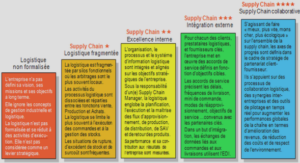Reliability is of critical importance in various types of electrical and mechanical systems. A well-known and complex reliability optimization problem is the redundancy apportionment problem (RAP) for series-parallel systems which can be identified as the selection of the optimal combination of component type and redundancy level for each subsystem in order to meet various objectives given constraints on the overall system. The problem can become complicated due to the presence of multiple conflicting objectives, such as minimizing the system cost and system weight or volume, while simultaneously maximizing the system reliability.
Many different formulations and different optimization approaches have been used in solving RAP problem. Due to the computational difficulty, which increases exponentially in terms of the problem size and the number of constraints Traditional approaches usually restrict artificially the search space to solution where only one component type can be chosen for each subsystem, and then the same type can be used to provide redundancy. After such restrictions, mathematical programming techniques, such as dynamic programming, Integer Programming, mixed integer and nonlinear programming, and multiobjective approaches are used to provide solutions. But such restrictions are not necessary for practical engineering problem, where different components can be used within each subsystem to provide high reliability. For example, multi-speed gearboxes use different gear pairs in each stage, and power plants can uses Gas turbines and steam turbines in parallel as prime movers. In practice, it is possible to obtain better solutions by relaxing the restriction.
Genetic Algorithms (GA) use probabilistic search to overcome the shortcomings of the traditional approaches and has obtained excellent results for RAP. However, GA uses an improving strategy requiring the evaluation of prospective solutions over many generations. This results in significant computational effort for large-scale problems.
Therefore, a more efficient and effective approach is desirable.
In this research, we focus on the development of heuristic methods and meta-heuristic algorithms for the reliability and redundancy apportionment problems (RAP) of complex electromechanical systems. Ant Colony System (ACS) is proposed as optimization methodology for RAP, and thus gives another evidence for its versatility. ACS is based on the Ant System that imitates the behavior of real ants when search food. Ants communicate information about food sources via the quantity of an aromatic essence called pheromone, which the ants deposit as they move along. Over time, the short direct paths leading from the nest to a food source are more frequented than longer paths. As a result, the direct paths are marked with more pheromone, which in tum attracts more ants to follow the paths and make corresponding pheromone trails grow faster. The process is thus characterized by a positive feedback loop, where the probability with which ants choose a path increases with the number of ants that previously chose that same path.
Problem statement
In many practical system design situation, the overall system is partitioned into a specifie number of subsystems, according to the function requirement of the system. For each subsystem, there are different component types available with varying reliability, costs, weight, volume and other characteristics. The system reliability depends on the reliability of each subsystem. To maximize system reliability, the following approach can be considered : i) using more reliable component, ii) adding redundant components in parallel, or iii) a combination of i) and ii). For the systems designed using off-the-shelf components, with known cost, reliability, weight and other attributes, system reliability design can be formulated as a combinatorial optimization problem. The best-known reliability design problem of this type is the reliability & redundancy apportionment problem (RAP).
Approach dive:rsities in system :reliability optimization
The redundancy apportiorunent problem (RAP) for series-parallel systems has proven to be NP-hard . Many different optimization approaches have been used for solving this problem. Tillman et al and Kuo & Prasad provided a thorough overview and summary of different formulations and different optimization approaches related to optimal system reliability with redundancy. For finite size problems, a straightforward exact algorithm is to simply enumerate the full solution space. Mathematical programming techniques, such as dynamic programming and integer programming (IP) have been successfully applied to variation ofthe problem.
Heuristic methods for RAP
To increase efficiency, all modem exact methods use pruning rules to discard parts of the search space in which the optimal solution cannot be found. These approaches are doing an implicit enumeration of the search space. For optimization problems the best-known examples are branch & bound algorithms, Generalized Lagrange Function (GLF) method and the Generalized Reduced Gradient (GRG) method.
Kuo et al. presents a heuristic method for RAP based on a branch-and-bound and Langrangian multiplier. The initial node is associated with the relaxed version of RAP, Bach node is associated with a nonlinear programming problem which is a relax version of RAP with sorne variables fixed at integer values. The bound associated with any node is the optimal value the corresponding optimization problem. The nonlinear programming associated with a node is solved by Langrangian multipliers.
In the nonlinear programming approach, Tillman, Hwang and Kuo introduce a MINLP method to solve the RAP problem. Component reliabilities are expressed as continuous variables, cost is defined as a smooth function of reliability and the constraints are nonlinear functions of severa! decision variables. This approach is based on the concept that a component is added to the stage where its addition produces the greatest ratio of incrementai increase in reliability to the product of decrements in slacks. This is a good approach for new system designs when components are being designed specifically for the new system and optimal reliability levels represent the reliability to be designed for the new components or used as a specified value for suppliers.
Hwang, Tillman and Kuo show the Generalized Lagrange Function (GLF) method and the Generalized Reduced Gradient ( GRG) method. The authors use both methods to solve nonlinear optimization problems for reliability of a complex system. They :first maximize complex-system reliability with a tangent cost-function and then minimize cost with a minimum system reliability constraint. However, it is not often possible or practical to determine a differentiable function, which is required in these algorithms, for component cost as it relates to reliability.
INTRODUCTION |






